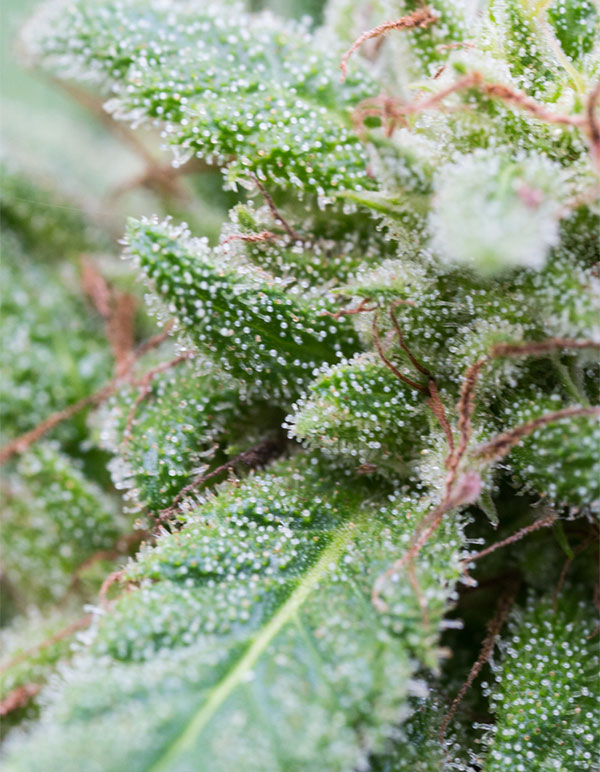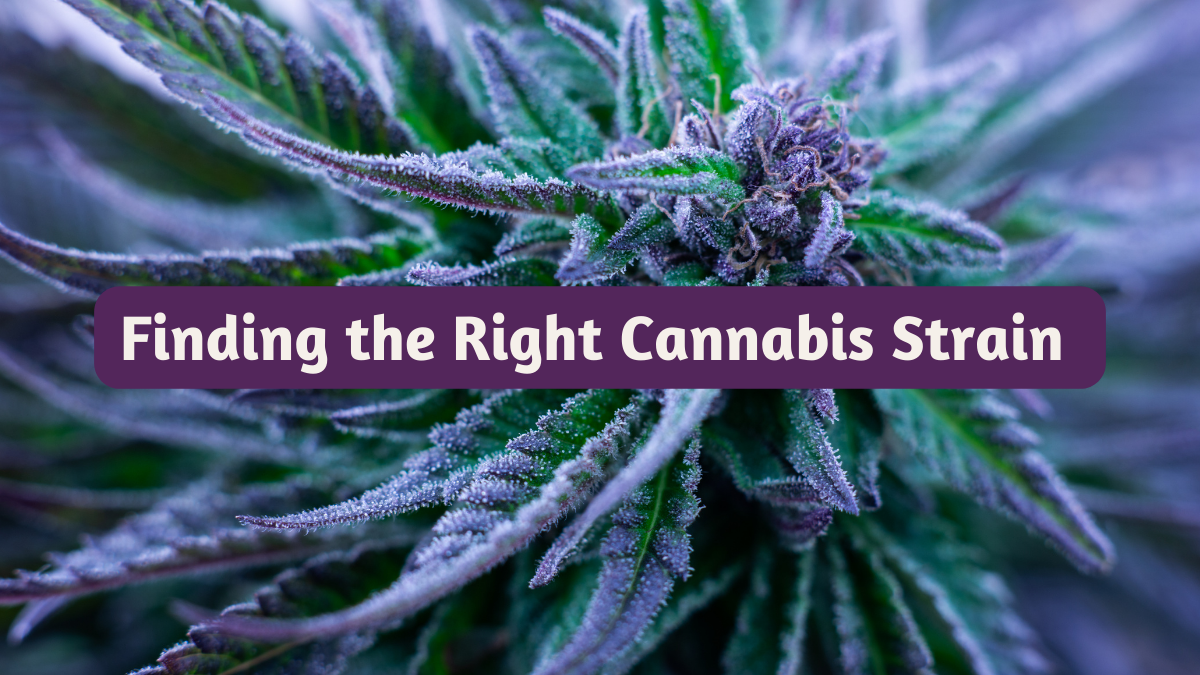If you’re preparing to embark on a cannabis journey, building some essential cannabis knowledge can be extremely helpful to curating your ideal experience. We’ve developed this guide to help you understand one of the most important compounds found in each unique cannabis strain. Knowledge can allow you to free yourself as you discover which cannabis products suit you best and choose them again in the future. Whether you are looking for therapeutic solutions or simply that long-lasting euphoria, cannabis compounds are key.

Cannabis Is About More Than Just THC
When most people think about compounds in cannabis, well-known cannabinoids like THC (tetrahydrocannabinol) and CBD (cannabidiol) often come to mind. However, they do not act alone. In fact, while there are over 150 types of cannabinoids found in hemp, including CBG, CBN, and CBC, cannabinoids are not the only cannabis compounds of note. Substances like cannabis flavonoids and terpenes can exert their own influence on the cannabis experience.
On a fundamental level, cannabis terpenes elevate the sensory experience by creating rich flavor profiles and pungent aromas. However, they are capable of doing far more than that. In fact, terpenes interact with each of the cannabinoids in a strain, as well as the body’s endocannabinoid system (ECS). In this way, terpenes have a significant impact on the sensory experience of using cannabis and can have positive health impacts as well.
What Are Cannabis Terpenes?
Scientifically speaking, terpenes are large groups of hydrocarbons that form volatile compounds. These compounds are the primary component of pungent oils given off by the plant. Oils containing terpenes are found not just in the cannabis plant but in every other plant on Earth.
Practically speaking, when you take in the aroma of any plant, such as a rose petal, crushed pine needle, or lavender blossom, you are experiencing the influence of terpenes on essential plant oils. In nature, terpenes have a very specific set of functions—to attract pollinators, repel pests and herbivores, resist disease, and even communicate with other plants.
Where Do Terpenes Come From?
Terpenes are fundamental compounds found in plant tissues across all species within the plant kingdom. Their location differs based on their biological function. For example, some terpenes are utilized by plants to communicate using a sort of biological sign language. To transmit messages to members of their own species, other species, and even other types of organisms, many plants use terpenes as pheromones. In this case, you might see aromatic flowers attracting pollinating birds or insects to interact with and spread the pollen they house there.
In cannabis, high concentrations of terpenes are found in the resinous glands located at the base of each of the millions of trichomes (tiny hairs) found on each cannabis bud. Cannabis terpenes appear to not only invite pollinators but also drive off threatening organisms like insects and other herbivores. Some may even protect the plant against damaging UV rays from the sun.

How Do Terpenes Affect Cannabis Strains?
In cannabis, each unique terpene also lends its signature scent and flavor to the cannabis strain. In turn, each strain is influenced by its unique combination of several of over a hundred potential terpene compounds. It is because terpenes are found in most other plant species that cannabis strains can be customized to feature certain smells and tastes, like citrusy lemon zest or juicy orange, crisp pine, or roasted cloves.
Still, while we believe the cannabis experience should be about feeling good, it’s important to note that terpenes aren’t just about smelling good. Terpenes have been found to have positive therapeutic and psychoactive impacts as they interact with other compounds and the ECS. As they work in synergy with other cannabis compounds like cannabinoids and flavonoids to impart unique benefits and sensory effects, terpenes are said to be a part of cannabis’ unique “entourage effect.” Therefore, as each hybrid strain of cannabis has a unique cannabinoid and terpene profile, each boasts a unique set of effects.
How Do Terpenes Work in the Body?
THC and other cannabinoids interface with the endocannabinoid system in the body, which is responsible for regulating a host of neurotransmitters that modulate memory, sleep, learning, energy, temperature, the immune system, mood, and even emotions. Terpenes have been shown to assist in the binding of THC to CB1 receptors in the brain. In other words, terpenes can enhance and modulate the effects THC and other cannabinoids have within the body. Terpenes can also bind directly to ECS receptors, increasing or decreasing the compounds they give off and impacting the amount of THC that reaches the brain.
Each of the 150 or so different terpenes plays a different role in influencing the 100 or so different cannabinoids as they interact with the ECS. That’s why varying the combination and concentration of terpenes and cannabinoids in a strain can yield unique experiences, which then become associated with the strain. For example, some strains are known to generate a full-body relaxing experience as the compounds influence mood and sleep, while other strains influence cognition and sensory adaptation.

What Effects Do Terpenes Have?
Existing cannabis research backs the premise that, yes, terpenes do have curative and healing properties on their own. When they are consumed in tandem with cannabinoids like THC or CBD, the effects can have an even greater impact. This seems to be particularly true for terpenes consumed in oral cannabis products.
Evidence demonstrates that cannabis terpenes interact with cannabinoids and modulate their binding to ECS receptors to generate an elevated impact on the body. For example, CBD is known to reduce stress and anxiety, and these effects are enhanced by the presence of the terpene limonene.
Additionally, the “entourage effect” proposes that certain minor side effects associated with cannabis consumption are reduced in the presence of certain terpenes. For example, the terpene pinene, which boosts concentration, can combat memory-related side effects associated with overconsumption of THC. This proof of the entourage effect highlights why there has been growing interest in terpenes in recent years.
Why Are Terpenes Important?
The science is proof that terpenes contribute to a more pleasant cannabis experience—primarily because they enliven the senses and make you feel good. Depending on the nature of the interaction between terpenes, cannabinoids, and the ECS, terpenes can help perk up, sedate, arouse, or simply help you loosen up. When you add the many potential health and therapeutic benefits terpenes hold, it’s easy to see why paying attention to terpene profiles is a quickly growing priority in the cannabis industry.
Skilled cannabis cultivators can manipulate new hybrids to vary their terpene and cannabinoid compositions. By doing so, they are essentially creating a custom strength, intensity, duration, and sensation associated with the cannabis experience. For you, this means a new opportunity to select a custom experience based on a strain’s terpene profile. If you have certain health conditions, paying attention to the terpenes in a strain can also help you tailor a set of therapeutic benefits to optimize your well-being.
Common Terpenes Found in Cannabis

Linalool
Linalool is a terpene found in high concentrations in the lavender plant, and it emits a signature woody yet deeply floral scent. When you smell laurel, birch, rosewood, or lavender, you are experiencing the power of linalool. Linalool may increase the uptake of THC in the nervous system. This terpene has been considered to be a powerful sedative since early human history and is thought to ease anxiety, relieve pain, reduce depression and relax the muscles. Specifically, it has been shown to relieve the joint pain caused by arthritis inflammation.

Limonene
Limonene is the second most plentiful terpene across cannabis strains, though it is not found in all cannabis plants. It typically has a citrusy, sour flavor and aroma and can be found in high concentrations in fruits like oranges and lemons. It also appears in citrus rinds, mint, and juniper. Limonene can be a potent therapeutic with anti-inflammatory and antibacterial characteristics, in addition to helping with stress relief and digestive pain. Limonene is found in higher concentrations in sativa-dominant strains and can accelerate the body's uptake of other terpenes.

Pinene
Pinene is the most commonly occurring terpene in nature. As you may suspect, pinene has the signature scent of pine and is present in other conifers as well as rosemary, parsley, dill, and basil. This terpene can open up the senses and result in a stimulated state of mind. It is also associated with positive health benefits, including anti-inflammatory and pain-relieving effects. Additionally, pinene can facilitate the improvement of breathing functions and may help cancel out the memory issues sometimes associated with large quantities of cannabis.

Myrcene
Myrcene emanates a clove-like aroma that is both fragrant and earthy and can be found in hops, thyme, citrus fruits, and mango. This common terpene is able to penetrate the blood-brain barrier, increasing cannabinoid uptake. It has been associated with antioxidant benefits and can thus alleviate chronic aches and pains resulting from inflammation. Myrcene may also have tumor-reducing benefits that can improve the prognosis of individuals with cancer.

β(beta) Caryophyllene
Though there are two forms of caryophyllene (alpha and beta), "caryophyllene" typically refers to β-caryophyllene. This terpene has a spicy, peppery, woody aroma and is found in a variety of edible plants like pepper, cinnamon, oregano, and basil. Of all of the known terpenes, it is the only one that does not interfere with THC intake when interacting with the brain receptor CB2. Caryophyllene has antibacterial and antimicrobial properties and may help address conditions like epilepsy, osteoporosis, and anxiety.

Humulene
Humulene has an earthy aroma and is found in black pepper, coriander, cloves, sage, and hops. It can actually suppress the appetite, alleviate pain symptoms and bacterial infections, and help fight inflammation. Humulene is also among the terpenes suspected to help slow the growth of cancerous tumors.

Terpinolene
This terpene has hints of floral aromas like lilac as well as citrusy aromas like lemon. It also can be strongly piney, with underlying wildflower and herb notes. Terpinolene is found in high concentrations in cypress, rosemary, and sage and can be used to repel insects. Terpinolene has also demonstrated soothing and relaxing properties and may be effective at preventing tumor growth.
Elevating Your Cannabis Experience
With the information included above, it’s clear that shopping for cannabis can involve much more than the THC content of each strain. Understanding the primary terpenes contained within cannabis strains and their interactions with certain cannabinoids can help you engineer your ideal sensory experience. For example, two strains with the same THC content but different terpene compositions can provide two entirely different highs. A strain with high concentrations of myrcene can increase the uptake of THC and give you a cerebral buzz, while a strain with more caryophyllene can cause a more sedative effect.
We know that the cannabis experience isn’t always about “feeling it;” it’s about feeling good. We also know that the complex interactions between terpenes, cannabinoids, and the ECS can be mystifying to even the most seasoned cannabis users.
That’s why, within the confines of our friendly neighborhood boutique, our terpene bar enables you to interact directly with terpene oils. You can build an understanding of which fragrances appeal the most to your sensory particulars and which may help you achieve the effects you are looking for. This way, you can ask our knowledgeable budtenders for strains that match your needs, no matter your level of experience. Our browsing process is straightforward and simple, and so is your understanding of the qualities of each strain.
Test Your Terpene Knowledge
What are cannabis terpenes? As we learn more about this amazing plant and discover the role terepene play, it’s crucial that we learn which ones work best for our own needs! Take our terpene quiz now!
Explore
Continue Your Cannabis Learning with Dank Budz
Cannabinoids are an essential component of the therapeutic and psychoactive effects most people seek when they consume cannabis. However, they are far from the only important compounds found within our favorite plant. Keep reading to learn more about cannabis science.




